All 2D digital illustrations were made in Paint.net, often from a pencil sketch. Most recent additions can be found at the top of the page.
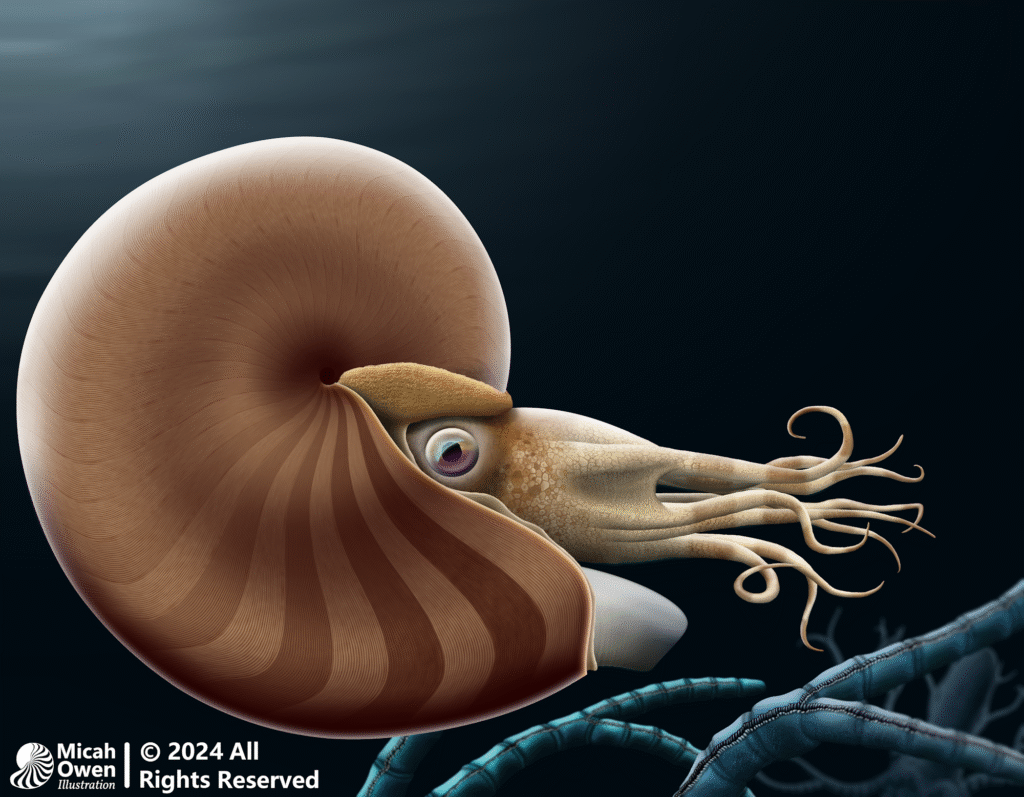
Tornoceras uniangulare
Finished October 7, 2024
Tornoceras uniangulare was a Goniatite Ammonoid whose range extended from what is now North America to Europe and Africa. It has been found at the Seven Stars Fossil Site in Pennsylvania, which is dated to 385 million years ago. The shell of T. uniangulare usually grew up to an inch in diameter and was rounded in cross section, which is suggestive of a maneuverable swimmer. It likely fed on small organisms that it found near the seafloor, using its gas-filled shell, or phragmocone, to regulate its buoyancy. In this reconstruction, T. uniangulare is depicted swimming slowly past the arms of Ancyrocrinus bulbosus, a peculiar crinoid with a stiff stem and anchor-like holdfast.
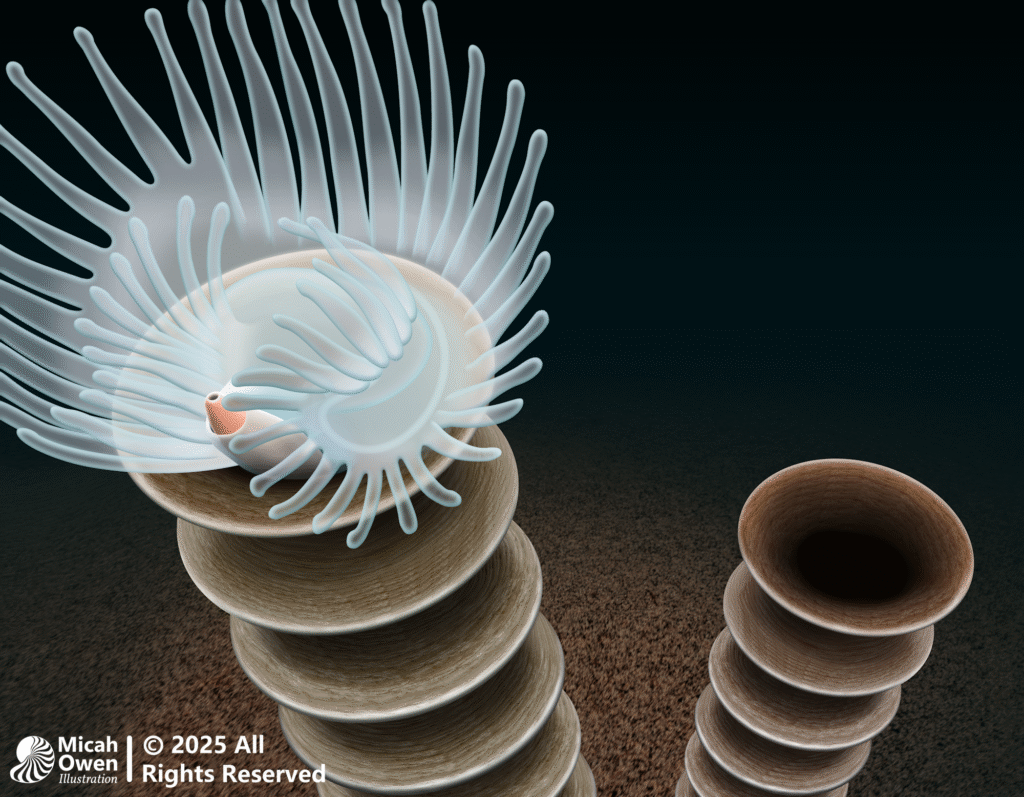
Tentaculites bellulus
Finished August 21, 2024
Tentaculitids were enigmatic filter-feeding organisms that built ridged cone-like shells that helped them stay rooted upright in the seabed. X-rays of tentaculitid fossils from the Hunsrück Slate of Germany have revealed that they bore many tentacles that protruded from the aperture of the shell. Originally, these fossils were used to support the taxonomic placement of the group within Cephalopoda, but the discovery that tentaculitids reproduced through budding rules out this possibility. Tentaculitids are now placed in Lophophorata as sister taxa to both Hyolithids and Brachiopods. They were common in the Paleozoic era, sometimes being the main rock-building components and can be found at the Seven Stars Fossil Site.
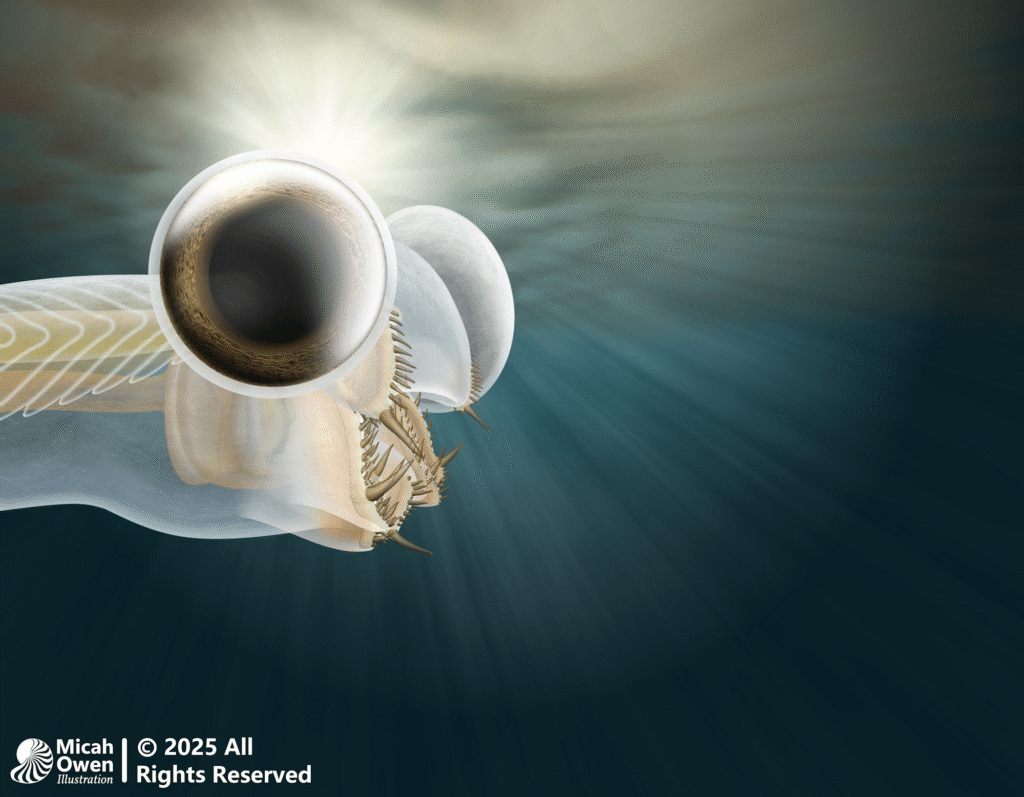
Polygnathus linguiformis linguiformis
Finished July 12, 2024
P. linguiformis linguiformis was a subspecies of conodont that was common during the Middle Devonian Period in North America and Northern Africa. It frequented transitional environments in between the near-shore range of Icriodus and the offshore range of Palmatolepis, and bore large crushing P1 elements in its pharynx. While the taxonomic placement of conodonts as a whole has been a disputed issue, the consensus is that they were chordates related to Cephalochordates (lancelets) and Cyclostomes (modern jawless fish such as lampreys and hagfish) due to the presence of a notochord and v-shaped muscle blocks that are both visible in the reconstruction. P. linguiformis linguiformis has been found in the Mahantango Formation and may be present at the Seven Stars locality.
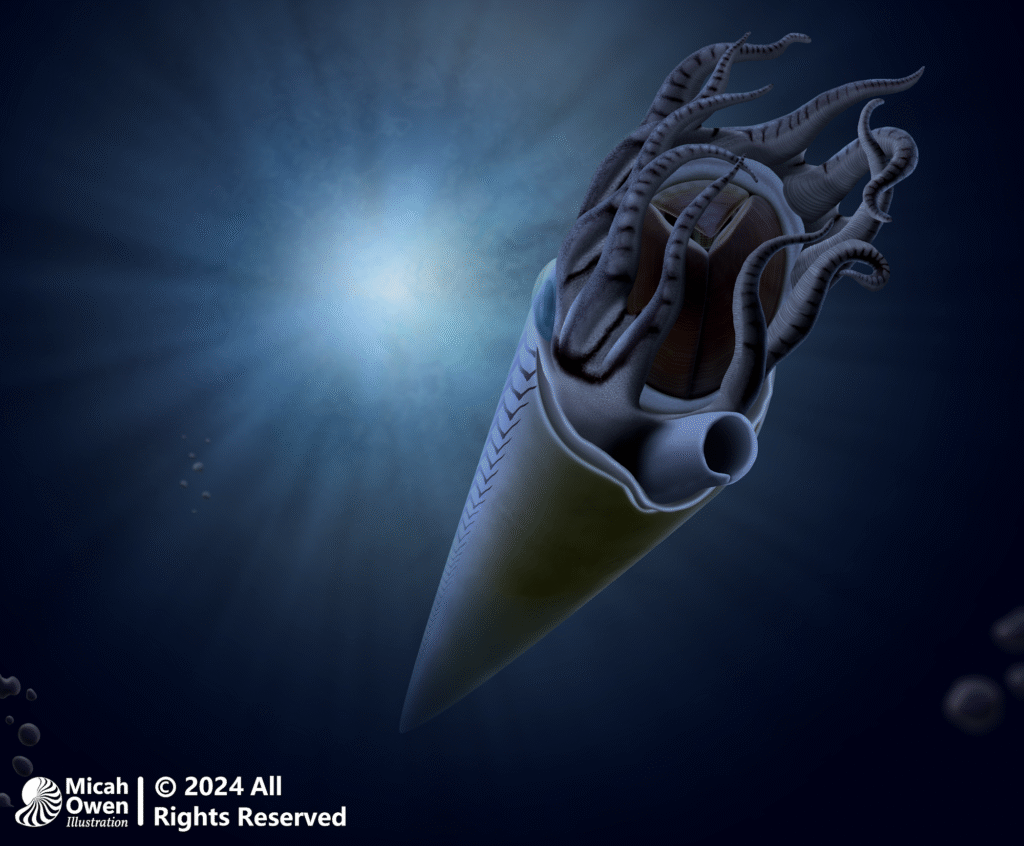
Michelinoceras telamon
Finished April 29, 2024
The Hamilton Group is home to numerous cephalopods, many of them bearing strait conical shells. Specimens referred to as Michelinoceras telamon compare well with fossils from the Seven Stars Fossil Site, which was home to other cephalopods such as Tornoceras uniangulare, Striacoceras typum, and Bactrites aciculum. Other Devonian Orthocerids similar to M. telamon had pale shells with dark zig-zag bands on the dorsal surface of the shell that provided counter shading as the mollusk swam, so M. telamon has been reconstructed with similar color patterns. Silurian Orthocerids have been found with calcitic tripartite plates known as Aptychopsis near the apertures of their shells that have most recently been identified as precursors of the cephalopod jaw apparatus. While no similar structures have been found in Devonian Orthocerids, it seems likely that would have had similar oral morphology.
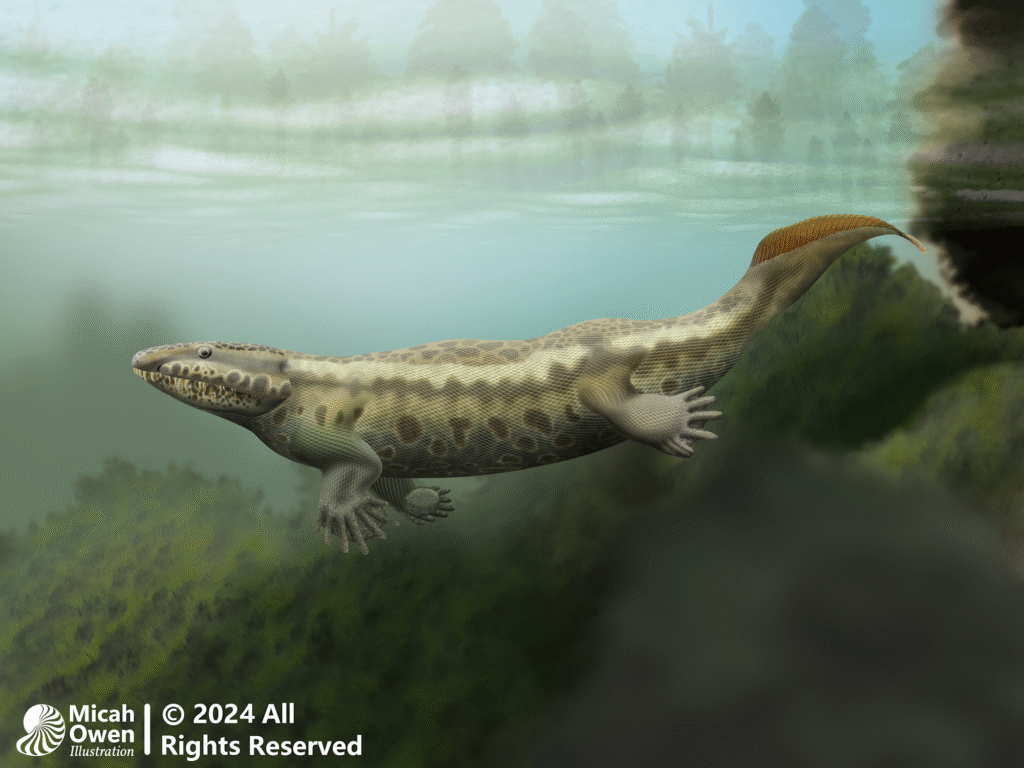
Hynerpeton bassetti
Finished February 19, 2024
Hynerpeton bassetti was a tetrapodomorph that lived in Pennsylvania during the Late Devonian Period. It was discovered at the Red Hill Fossil Site where the giant lobe-finned fish Hyneria lindae has also been found and was for 12 years the earliest known tetrapodomorph in North America. Its shoulder girdle, the best known skeletal element, was robust and was the attachment site for powerful muscles. These muscles allowed Hynerpeton to navigate shallow freshwater environments and possibly even make excursions onto land, letting it more easily search for food in the seasonal dry periods that characterized the Catskill Delta region.
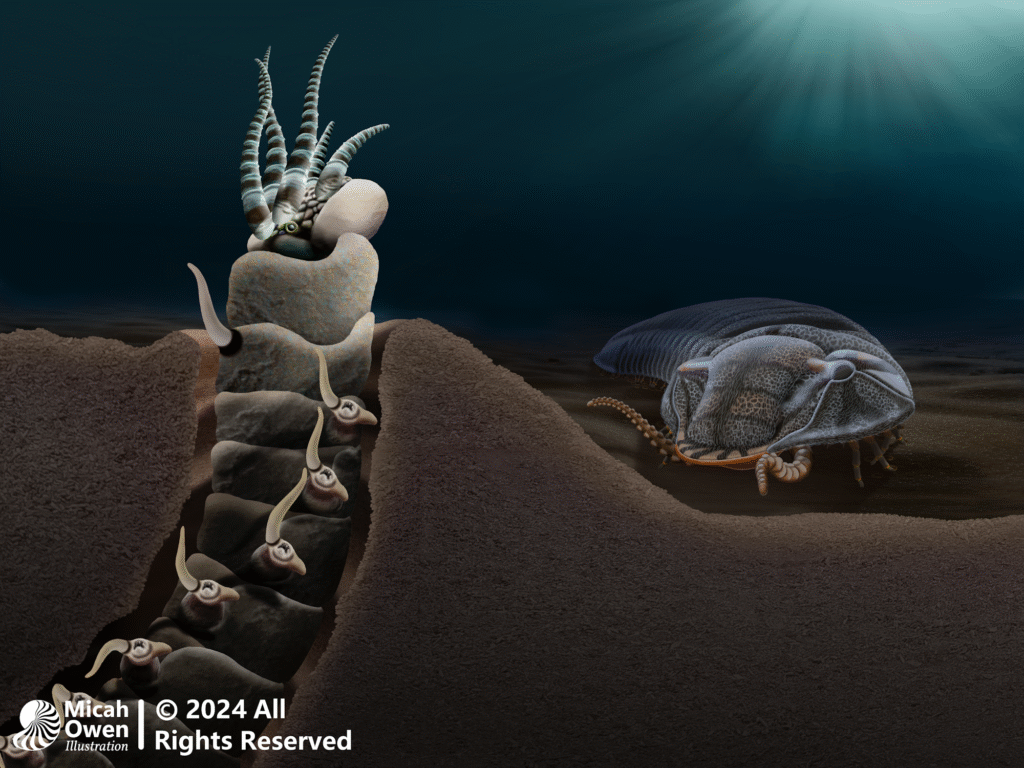
Polychaete and Dipleura dekayi
Finished January 24, 2024
The Seven Stars Fossil Site, an exposure of the Mahantango Formation, is full of winding ichnofossils that likely represent worm burrows. Other formations that are also part of the Hamilton Group preserve scolecodonts, which are the sclerotized jaws of Eunicida, an order of polychaete worms. It’s possible that the burrows found at Seven Stars were constructed by Eunicids, as depicted in this reconstruction. In the background, the much larger trilobite Dipleura dekayi can be seen foraging for food.
The Seven Stars page contains more information about both Eunicid worms and the trilobite Dipleura dekayi.

Hyneria lindae
Finished October 13, 2023
Hyneria lindae was a large Tristichpterid fish that lived in Pennsylvania during the Late Devonian Period. It had a lengthened juvenile stage which allowed it to grow up to 12 feet (3.6 meters) long and a very low metabolism, allowing it to go long periods without eating. Canals perforating its dermal bones and scales hint at a complex network of mechanoreceptors or electroreceptors that allowed the fish to perceive prey without seeing it, a distinct advantage in the murky braided streams Hyneria lived in. This reconstruction was made in Paint.net based off of Daeschler & Downs, 2018, after an expedition to the Red Hill Fossil Site where remains of Hyneria lindae can be found.
More information about this reconstruction can be found on The Fossil Forum.
